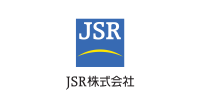Company Analysis Premier Anti-Aging Co., Ltd.
1. Summary
Advantages
- Price (865 ¥) is less than fair price (967.07 ¥)
- Current debt level 22.2% is below 100% and has decreased over 5 years from 33.18%.
Disadvantages
- Dividends (0%) are below the sector average (4.06%).
- The stock's return over the last year (-5.04%) is lower than the sector average (0.079%).
- The company's current efficiency (ROE=-21.6%) is lower than the sector average (ROE=6.91%)
Similar companies
2. Share price and performance
2.1. Share price
2.2. News
2.3. Market efficiency
| Premier Anti-Aging Co., Ltd. | Index | ||
|---|---|---|---|
| 7 days | 4.4% | -0% | -0.7% |
| 90 days | 26.2% | 22.1% | -5.8% |
| 1 year | -5% | 0.1% | -8% |
4934 vs Sector: Premier Anti-Aging Co., Ltd. has significantly underperformed the "" sector by -5.12% over the past year.
4934 vs Market: Premier Anti-Aging Co., Ltd. has outperformed the market by 2.95% over the past year.
Stable price: 4934 is not significantly more volatile than the rest of the market on "Tokyo Stock Exchange" over the last 3 months, with typical variations of +/- 5% per week.
Long period: 4934 with weekly volatility of -0.097% over the past year.
3. Summary of the report
4. Fundamental Analysis
4.1. Stock price and price forecast
Below fair price: The current price (865 ¥) is lower than the fair price (967.07 ¥).
Price not significantly lower than the fair price: The current price (865 ¥) is slightly lower than the fair price by 11.8%.
4.2. P/E
P/E vs Sector: The company's P/E (12.29) is lower than that of the sector as a whole (118.28).
P/E vs Market: The company's P/E (12.29) is lower than that of the market as a whole (129.47).
4.2.1 P/E Similar companies
4.3. P/BV
P/BV vs Sector: The company's P/BV (1.23) is lower than that of the sector as a whole (99.03).
P/BV vs Market: The company's P/BV (1.23) is lower than that of the market as a whole (96.37).
4.3.1 P/BV Similar companies
4.4. P/S
P/S vs Sector: The company's P/S indicator (0.3684) is lower than that of the sector as a whole (98.9).
P/S vs Market: The company's P/S indicator (0.3684) is lower than that of the market as a whole (96.35).
4.4.1 P/S Similar companies
4.5. EV/Ebitda
EV/Ebitda vs Sector: The company's EV/Ebitda (-8.26) is lower than that of the sector as a whole (125.67).
EV/Ebitda vs Market: The company's EV/Ebitda (-8.26) is lower than that of the market as a whole (102.89).
5. Profitability
5.1. Profitability and revenue
5.2. Earnings per share - EPS
5.3. Past profitability Net Income
Yield Trend: Negative and has fallen by -46.02% over the last 5 years.
Accelerating profitability: The return for the last year (0%) exceeds the average return for 5 years (-46.02%).
Profitability vs Sector: The return for the last year (0%) exceeds the return for the sector (-10.94%).
5.4. ROE
ROE vs Sector: The company's ROE (-21.6%) is lower than that of the sector as a whole (6.91%).
ROE vs Market: The company's ROE (-21.6%) is lower than that of the market as a whole (7.67%).
5.5. ROA
ROA vs Sector: The company's ROA (-12.82%) is lower than that of the sector as a whole (3.68%).
ROA vs Market: The company's ROA (-12.82%) is lower than that of the market as a whole (3.89%).
5.6. ROIC
ROIC vs Sector: The company's ROIC (0%) is lower than that of the sector as a whole (6.77%).
ROIC vs Market: The company's ROIC (0%) is lower than that of the market as a whole (8.77%).
7. Dividends
7.1. Dividend yield vs Market
Low yield: The dividend yield of the company 0% is below the average for the sector '4.06%.
7.2. Stability and increase in payments
Unstable dividends: The company's dividend yield 0% has not been consistently paid over the past 7 years, DSI=0.
Weak dividend growth: The company's dividend yield 0% has been growing weakly or stagnant over the past 5 years. Growth over only 0 years.
7.3. Payout percentage
Dividend Coverage: Current payments from income (0%) are at an uncomfortable level.
Pay for your subscription
More functionality and data for company and portfolio analysis is available by subscription




